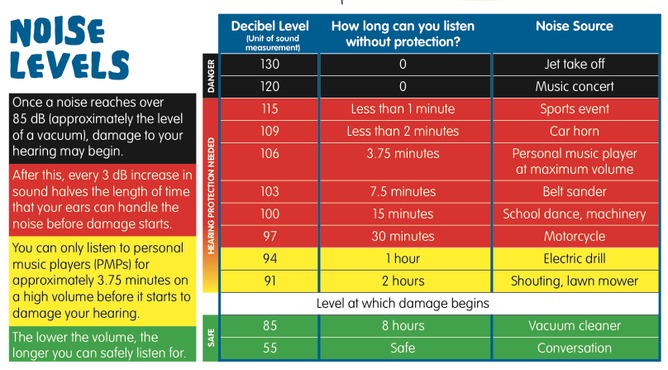Health Check: Is Your Personal Music Player Doing You Damage?(Op-Ed)


This article was originally published at The Conversation. The publication contributed the article to LiveScience's Expert Voices: Op-Ed & Insights.
It’s happened to all of us – you walk past someone and you can hear every beat, riff and wail coming from their headphones. If you’ve ever wondered whether this could be damaging their hearing, the answer is yes.
In the past, noise-induced hearing loss typically affected industrial workers because they experienced prolonged exposure to excessive levels of noise with limited or non-existent protective equipment.
There are now strict limits on occupational noise exposure and many medicolegal claims have been filed as a result of regulation.
But the ubiquitous use of personal music players has radically increased our recreational noise exposure, and research suggests there may be some cause for concern.
The problem is not just limited to children and teenagers either; adults listen to loud music too. According to the World Health Organization hearing loss is already one of the leading causes of disability in adults globally, and noise-induced hearing loss is its second-largest cause.
In Australia, hearing loss is a big public health issue, affecting one in six people and costing taxpayers over A$12 billion annually for diagnosis, treatment, and rehabilitation.
Get the world’s most fascinating discoveries delivered straight to your inbox.
The problem
Some smartphones and personal music players can reach up to 115 decibels (roughly equivalent to the sound of a chainsaw). At this level, it can take less than a minute before permanent damage is done to your hearing.
When sounds enter our ear, they set in motion tiny frequency-specific hair cells within the cochlea, our hearing organ, which initiate neural impulses perceived by us as sounds.
Exposure to high levels of noise leads to excessive wear and tear on these hair cells, leading to their damage or destruction.
The process is usually gradual and progressive; as our cochlea struggles to pick up sounds from the damaged frequencies we begin to notice poorer hearing. Unfortunately, once the hair cells are gone, they don’t grow back.
A number of US studies have shown the prevalence of noise-induced hearing loss in teenagers is increasing. And reports from Australia have suggested there’s an increased prevalence of noise-induced hearing loss in young adults who use personal music players.
This is a worrying trend considering the widespread usage of these devices.
Even a slight hearing loss can negatively affect a child’s language development and academic achievement. This is of significant concern considering some studies have reported a 70% increased risk of hearing loss associated with use of personal music players in primary school-aged children.
What’s too much?
Generally, 85 decibels and above is considered the level where noise exposure can cause permanent damage.
Listening at this level for approximately eight hours is likely to result in permanent hearing loss. What’s more, as the volume increases, the amount of time needed to cause permanent damage decreases.
In Australia, a number of hearing education campaigns, such as Cheers for Ears are teaching children and young adults about the damaging effects of excessive noise exposure from their personal music players with some encouraging results.
Hopefully, this will lead to more responsible behaviour and prevent future cases of noise-induced hearing loss in young adults.
There are no maximum volume limits for the manufacturers of personal music players in Australia. This is in contrast to Europe, where action has been taken after it was estimated that 50 and 100 million Europeans were at risk of noise-induced hearing loss due to personal music players.
Since 2009, the European Union has provided guidance to limit both the output and usage time of these devices. Considering the impact of hearing loss on individuals and its cost to society, it’s unclear why Australia has not adopted similar guidelines.
Some smartphones and music players allow you to set your own maximum volume limits. Limiting the output to 85 decibels is a great idea if you’re a regular user and value preserving your hearing.
It might also be worthwhile avoiding apps that automatically increase the volume when environmental noise increases. Taking breaks to avoid continued noise exposure will also help reduce your risk of damaging your hearing.
Losing your hearing at any age will have a huge impact on your life, so you should do what you can to preserve it. Hearing loss has often been referred to as a “silent epidemic”, but in this case it is definitely avoidable.
Chris Brennan-Jones receives funding from the Cochlear Foundation and has previously received funding from the Medical Research Council (UK) and Action on Hearing Loss.
Robert Eikelboom is employed by the Ear Science Institute Australia, a not-for-profit research institution, which developed and implemented the Cheers for Ear programme, supported by funding from the Australian Government Department of Health and Ageing.
This article was originally published at The Conversation. Read the original article. The views expressed are those of the author and do not necessarily reflect the views of the publisher. This version of the article was originally published on LiveScience.




